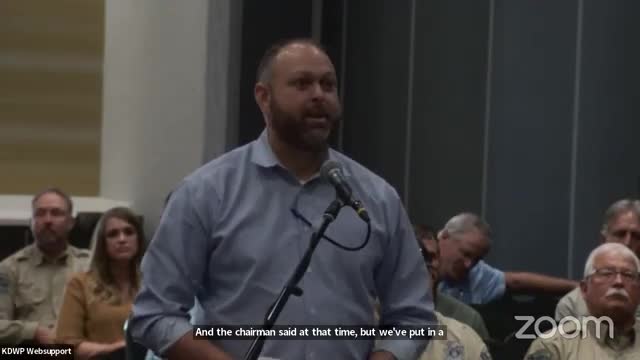Trail camera ban sparks heated debate among hunters
June 21, 2024 | Department of Wildlife & Parks, State Agencies, Organizations, Executive, Kansas

This article was created by AI summarizing key points discussed. AI makes mistakes, so for full details and context, please refer to the video of the full meeting. Please report any errors so we can fix them. Report an error »

In a recent government meeting, significant discussions centered around the controversial ban on trail cameras in public hunting areas. The commission voted unanimously to implement the ban, but concerns have since emerged regarding the lack of clarity on the rationale behind the regulation and the absence of follow-up discussions.
Commissioner Lauber acknowledged the need for further dialogue on the issue, yet 15 months later, no additional agenda items have been scheduled for discussion. Despite repeated requests for updates, stakeholders were informed that the staff had no plans to revisit the topic, prompting disappointment among those advocating for a reevaluation of the ban.
The primary contention revolves around the justification for the regulation, which has been described as a \"fair chase\" issue. Critics argue that the ban is overly broad and fails to address specific problems effectively. They suggest that a more nuanced approach, similar to regulations in other states, could be more appropriate. For instance, some states have opted for seasonal bans or restrictions on certain technologies rather than an outright prohibition.
During the meeting, one commissioner shared insights from informal discussions with fellow hunters and wildlife enthusiasts, revealing a general preference for the use of trail cameras among the majority. This sentiment raises questions about the effectiveness of the current regulation and whether it truly reflects the interests of the public.
The conversation also highlighted the challenges of managing limited public land in Kansas, where only a small fraction is available for hunting. The complexities of balancing various recreational uses and addressing conflicts among users were emphasized, with some commissioners advocating for more comprehensive discussions to explore potential solutions.
As the meeting concluded, there was a call for future agenda items to facilitate a robust discussion on the trail camera ban, reflecting a desire for greater transparency and collaboration among stakeholders. The ongoing debate underscores the need for effective communication and consideration of diverse perspectives in managing public resources.
Commissioner Lauber acknowledged the need for further dialogue on the issue, yet 15 months later, no additional agenda items have been scheduled for discussion. Despite repeated requests for updates, stakeholders were informed that the staff had no plans to revisit the topic, prompting disappointment among those advocating for a reevaluation of the ban.
The primary contention revolves around the justification for the regulation, which has been described as a \"fair chase\" issue. Critics argue that the ban is overly broad and fails to address specific problems effectively. They suggest that a more nuanced approach, similar to regulations in other states, could be more appropriate. For instance, some states have opted for seasonal bans or restrictions on certain technologies rather than an outright prohibition.
During the meeting, one commissioner shared insights from informal discussions with fellow hunters and wildlife enthusiasts, revealing a general preference for the use of trail cameras among the majority. This sentiment raises questions about the effectiveness of the current regulation and whether it truly reflects the interests of the public.
The conversation also highlighted the challenges of managing limited public land in Kansas, where only a small fraction is available for hunting. The complexities of balancing various recreational uses and addressing conflicts among users were emphasized, with some commissioners advocating for more comprehensive discussions to explore potential solutions.
As the meeting concluded, there was a call for future agenda items to facilitate a robust discussion on the trail camera ban, reflecting a desire for greater transparency and collaboration among stakeholders. The ongoing debate underscores the need for effective communication and consideration of diverse perspectives in managing public resources.
View full meeting
This article is based on a recent meeting—watch the full video and explore the complete transcript for deeper insights into the discussion.
View full meeting
